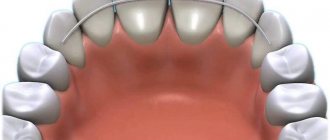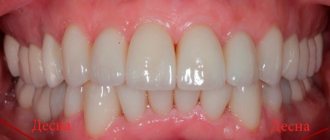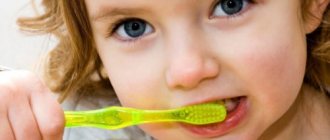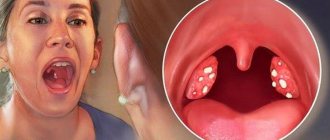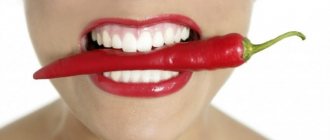Causes of yellow teeth
Most often, children's teeth turn yellow due to parental neglect. They must understand that they need to take care of their oral cavity from the moment the first tooth emerges. In advanced conditions, plaque removal will be required. The causes of yellowness may be hidden in acquired diseases. The color of children's crowns is negatively affected by jaundice, as brown spots appear. Also, a dark shade may appear due to problematic digestion.
As a result of mechanical damage, the enamel may crack or chip. And, as a result, yellow spots appear. The pathology is caused by hypoplasia of the enamel layer, under which there is yellowish dentin. In this case, the teeth are already yellow at the time of eruption. Factors in the development of hypoplasia include pathologies of the mother during pregnancy. After all, organs are laid down and mineralized in the womb. Precipitating factors include maternal infections and toxicosis, birth trauma, and prematurity of the infant.
Rare diseases can also be to blame for yellowness. We are talking about dentinogenesis imperfecta and amelogenesis. The first pathology develops with a congenital disorder of the dentin development process. And the second disease is associated with improper formation of the enamel layer. Most often, such anomalies are characteristic of girls. Their treatment is complex and must be started immediately after the units appear.
Eating junk food
Often, yellow teeth in a child are the result of food dyes. This situation is caused by frequent consumption of pumpkin and carrot juice. Orange dyes penetrate microcracks very easily, causing the crown to turn yellowish. Coloring vegetables, berries and fruits, for example, beets or blueberries, also work. Their bright color stays on little teeth!
It is necessary to remember the negative impact on acid units. It could be a too sour apple or applesauce, orange or lemon juice. They can cause acid necrosis. The cracks that appear are immediately filled with dyes and the crowns become dark. It should be noted that iron also affects the shade of enamel. Most often, this situation is typical for well water in rural areas where there are no filters.
A separate conversation about sweets, baked goods, candies, chewing gum with sugar. Particles of these products that remain in the mouth provide a favorable environment for bacteria and pathogenic microorganisms that settle in plaque. Here it is appropriate to remember that the most harmful food is its increased dose!
Poor oral hygiene
Children who do not know how to brush their teeth are most at risk of developing unsightly stains. Therefore, it is important to teach your child how to properly use a brush and toothpaste. It is good if parents keep this process under control. Well, when the situation is difficult, you need to have your teeth cleaned of yellow plaque by a professional hygienist. Only daily procedures at home will consolidate the results and prolong the effect.
- The first incisors are wiped with a soft bristle brush after any feeding.
- When the baby learns to hold the hygiene instrument himself, he needs to be taught the rules of brushing his teeth.
- The brush and paste are selected according to age. The dentist will provide invaluable assistance with this.
- Parents should monitor the cleaning process until 8-10 years of age.
- Children with orthodontic elements are subject to special monitoring. Monthly professional cleaning is the norm for these guys.
With improper care, unsightly plaque, stones and plaques appear. This worsens the child’s appearance and increases the risk of developing dental diseases. We are talking about caries, gingivitis, periodontal disease, and pathologies of the ENT organs.
Taking medications
Some medications cause enamel discoloration. This group of antibiotics primarily includes tetracycline and amoxicillin. If taken by a pregnant woman, it usually causes her baby's teeth to turn yellow. Often these drugs are prescribed to children themselves, even up to one year old. Their frequent use almost always contributes to darkening of the enamel. What to do? In such a situation, hygienic cleaning of the oral cavity is indicated. Professional dentistry will correct the unsightly condition. “Tetracycline teeth” can be whitened using modern technologies. Of course, such procedures should be prescribed to the child by a doctor.
Genetic predisposition
It has long been proven that the color of units is strongly influenced by genetics. If parents have dull teeth, then it is not surprising that the same yellow spots will appear on the child’s teeth. True, the factor of heredity does not occur often, so it cannot be called determining. But you shouldn’t write off genetics either. Today, more and more medical scientists are proving its importance. When diagnosing and developing a treatment program, the dentist must take into account the genetic line so that the therapy is effective.
Poor maternal nutrition during pregnancy
During the period of bearing a child, a woman must eat properly and nutritiously in order to receive valuable microelements and vitamins from food. If the diet is unbalanced, the fetus does not develop fully. From birth, such babies have thinned enamel due to the fact that even in the womb there was a deficiency of nutrients, especially calcium, vitamin and fluoride. Brown dentin will be visible through the thin layer. This causes yellow plaque on the child’s teeth. Therefore, a prerequisite for the proper development of the fetus is the rational nutrition of its mother.
To prevent the child’s teeth from deteriorating, the mother must have enough calcium and fluoride. A powerful source of calcium is sesame. The seed must be thoroughly crushed or chewed to release the beneficial trace element. Don't forget about bananas, salmon, broccoli and olive oil. To replenish fluoride reserves, you need to include avocados, carrots, cucumbers, and dates in your diet.
It's all due to age or neglect
One of the reasons why teeth turn yellow in both adults and children may be the food they eat. If you prefer foods with bright colors (chocolate, sauces, beets, drinks), or drink strong tea or coffee, you are unlikely to be able to keep your smile snow-white. An incorrect diet filled with foods with dyes is practically the only reason why teeth turn yellow in teenagers.
For people over 18, it becomes more difficult to achieve a snow-white smile - with age, tooth enamel becomes thinner, and the color of teeth loses its former brightness. Adults who work in hazardous industries involving volatile substances also suffer from yellowing.
Antibiotics will negatively affect the color of your smile, as well as the course of certain diseases (fluorosis, hemolytic and Addison's diseases).
Another reason why teeth turn yellow in adults is considered to be bad habits, especially smoking, and an important factor is frequent drinking of coffee. Tobacco tars are quickly deposited on the surface of tooth enamel and, accumulating, give the teeth an unpleasant yellow color.
Yellowness of teeth in a child 1-3 years old
It happens that this problem is not given due attention. Parents mistakenly believe that a one-year-old child with his baby teeth does not need a dental examination. After all, these units are a temporary phenomenon, so there will be no harm from their pathology. In reality, everything is completely different. If you do not visit the dentist in a timely manner, then problems in the form of darkening of the crowns in the future will develop into serious anomalies of the oral cavity. What should parents do?
- Once the incisors appear, they need to be wiped with a damp cloth after feeding.
- When your child turns 1 year old and has 8 units, start cleaning them with a toothbrush without toothpaste. It should be small in size with nice bristles.
- After the child turns 2 years old, begin to teach him to be independent in matters of oral hygiene, then at 2.5 years he will be able to carry out this procedure himself.
Consult your doctor about the choice of baby toothpaste. After all, it is very important to approach it correctly. Do not use products that are oversaturated with flavors and dyes.
Diagnosis of Priestley plaque on teeth
If darkening is detected on the enamel of a child’s teeth, you must contact a dental clinic.
The specialist will:
✔
inspection;
✔
laser diagnostics to determine the depth and size of the lesion;
✔
anamnesis collection.
After a conversation with the parent and child and collecting an anamnesis, the pediatric dentist will immediately prescribe treatment or conduct an additional examination. You should not neglect it - it is important for a specialist to find out why the child has black plaque on his teeth. Only after this will he be able to provide quality treatment.
Yellow plaque in children over 7 years old
Deposits discovered during school age are most often associated with improper tooth brushing procedures. It is important that a suitable brush is selected taking into account the level of sensitivity of the gum tissue. Special care is not required when performing routine procedures systematically. True, if the situation is seriously advanced, then you cannot do without a visit to the dentist. When a child is 8 years old or older, teeth cleaning using the Air Flow method is prescribed, if necessary. This procedure is safe and painless.
A harbinger of pathology is bad breath and a slippery coating on the crowns and gums. A timely cleaning procedure will prevent the mineralization of soft plaque, which often happens at this age. Refined and soft carbohydrate foods should be limited. Such products get clogged into the interdental spaces. It is useful to give children solid vegetables and fruits, for example, carrots or apples. Remember that proper hygiene is the key to oral health and the best remedy against yellow discolouration!
Effective dental methods for teeth whitening
If you are really interested in how to whiten your teeth, it is better to go to a doctor and take into account his recommendations. Today dentistry offers different methods to solve the problem:
- Mechanical cleaning is the simplest method, carried out using special attachments. As a result of the procedure, soft and hard dental deposits are eliminated. This technique helps prevent caries and gum disease.
- Hardware cleaning. How to clean your teeth and eliminate their yellowness? During the procedure, the doctor removes plaque using an ultrasound machine. Special attachments allow you to remove supragingival and subgingival deposits. After the procedure, the natural shade of the teeth returns.
- Bleaching. There are different ways to lighten tooth enamel. This can be chemical, intracanal, laser and photobleaching. These techniques differ in cost and effectiveness.
- Veneers. If you are looking for a way to remove dental defects, you should consider the option of special onlays for the front teeth. Veneers allow you to get a perfectly even and, what is important in case of yellow discoloration, a snow-white smile. This technique does not involve a strong impact on tooth enamel - grinding, laser treatment, etc.
Modern techniques make it possible to lighten enamel with varying degrees of yellowness. The procedures do not cause pain in the patient and are performed quickly enough. The doctor will recommend the most suitable technique for you.
What to do with a child's yellow teeth
The choice of treatment technology depends on the disease and the phase of its development. Light yellowness can be removed with special pastes. More severe cases require professional cleanings by a dentist. For older teenagers, ultrasonic teeth cleaning is used. If there is a serious need to use a skeler, the procedure is carried out delicately and with caution. The cost of procedures in our center is affordable, as we always pursue a reasonable pricing policy.
At the appointment with our dentist, the child will be mentally prepared for therapy in order to prevent fear. The level of oral hygiene is determined by special indicators. Professional cleaning procedures are painless. This can be a rotating brush, which works well on both the oral and vestibular sides. After such manipulations, as a rule, a hygiene lesson is conducted in a playful way.
How to whiten your teeth.
If you want to whiten your teeth to the natural color of dentin, then, at a minimum, special whitening pastes with abrasives will help. The most reliable remedy is professional teeth cleaning in the dentist's office.
If you want your naturally yellowish teeth to become white, then the heavy dental artillery comes into play. Photo whitening, laser method, zoom and others. Any of the methods, by the way, are extremely harmful to the teeth, and are not cheap. So think carefully. The second time the teeth will not grow, neither yellow nor white.
Preventive measures
To prevent yellowing of teeth, it is important to carry out all hygiene measures efficiently and on time. We are talking about twice daily cleaning of units, even dairy ones. It’s good if parents take their child to the dentist once every 60 days. The basis of dental health is a balanced and proper diet. As for the frequency of professional cleaning, it should be carried out once every six months. Don't forget to change your toothbrushes and toothpastes on time. Teach your child to oral hygiene from an early age, then dental problems will be minimized.
Additional protective measures for Priestley's raid
It is possible that Priestley's plaque on the teeth appeared due to an infection and, as a result, a temporary deterioration in the functioning of the immune system. But it is necessary to make sure that there are no serious and dangerous deviations in the child’s health. Therefore, if dental plaque is detected, the dentist will recommend taking additional measures:
- get tested for the presence of parasites in the body;
- consult a gastroenterologist;
- take tests to check the level of iron and calcium in the body;
- check your blood sugar levels.
These measures will help identify the problems that are causing plaque to form on your teeth.
Tooth enamel: general characteristics and properties
This is the hardest and most durable tissue in our body, its thickness on the outer surface reaches almost 2 mm. It consists of many layers formed at various stages of mineralization and has a crystalline structure. The chemical composition is represented predominantly by apatites, calcium and phosphorus predominate from inorganic compounds, and proteins, lipids and carbohydrates from organic compounds.
The main function is to protect dentin from external factors: mechanical, chemical and temperature stimuli. Thanks exclusively to this tissue, teeth can fulfill their main purpose - grinding and chewing food.
Despite its extraordinary strength, enamel is permeable to water and many organic and inorganic substances contained in saliva. It has been found that the degree of permeability for much-needed connections depends on several factors. If we talk about temporary occlusion, this is:
- condition of the oral cavity;
- nutritional features;
- long-term treatment with certain medications (in particular, tetracycline antibiotics);
- features of intrauterine development.
Enamel maturation
The composition of the protective tissue covering dentin is constantly changing, which is associated with age-related characteristics. Throughout the year after teething, there is an active accumulation of calcium and phosphorus, and during this period it is extremely important to receive all the necessary elements with food or multivitamin preparations. It has been proven that a sufficient content of microelements prevents the development of caries.



